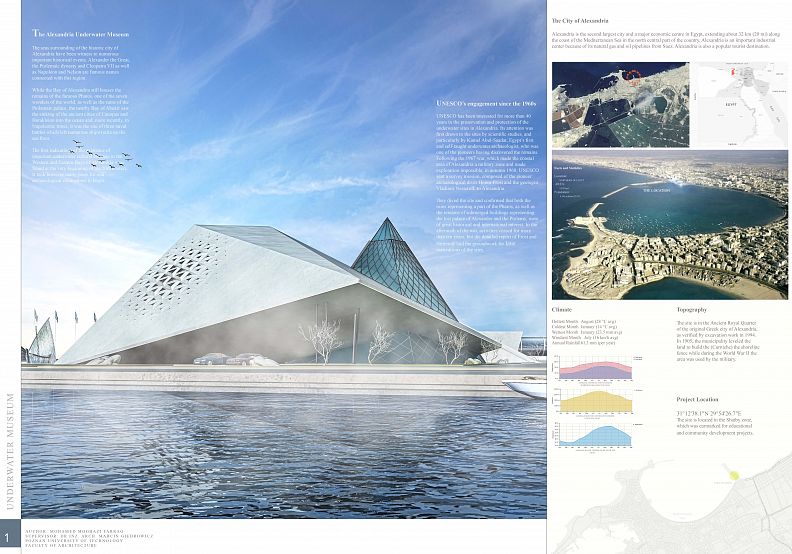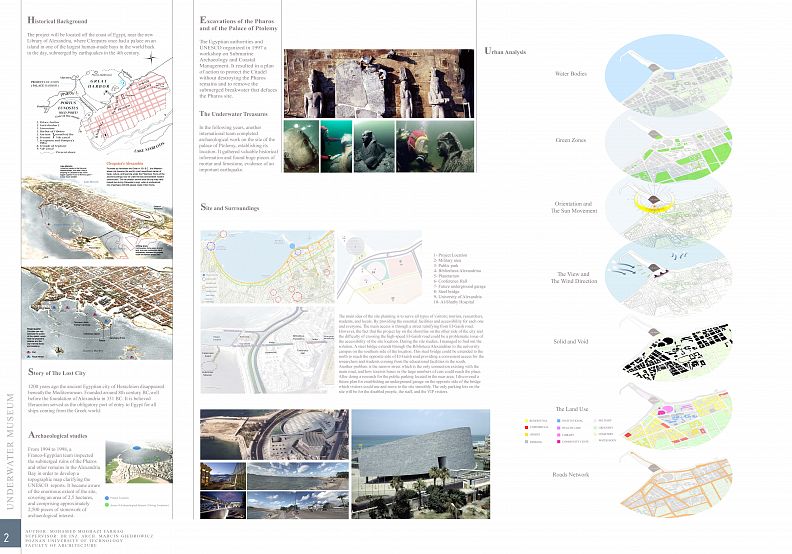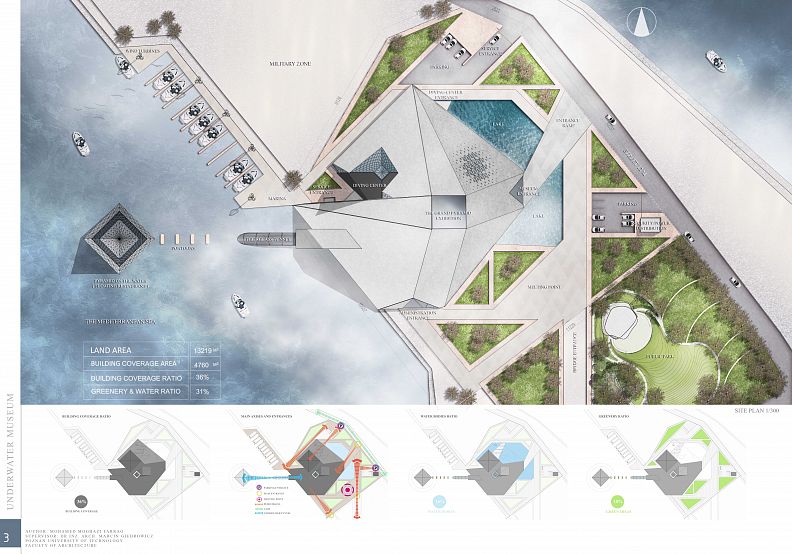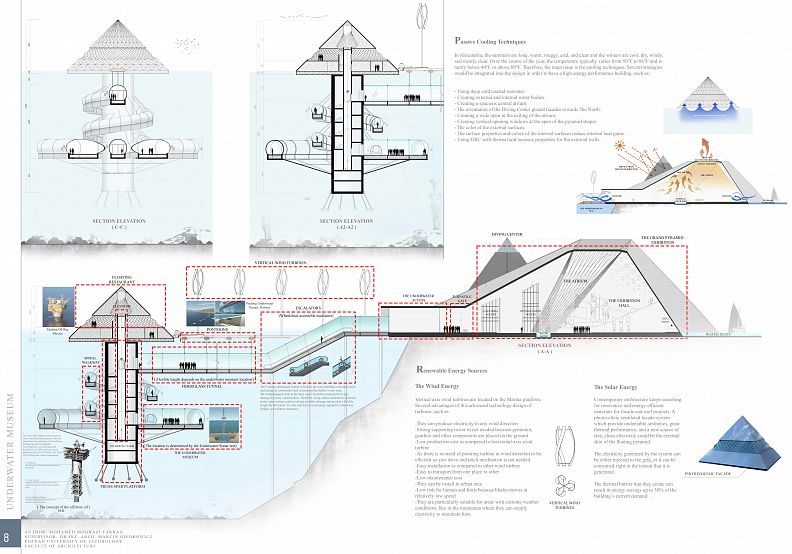Alexandria Underwater Museum

Project idea
The main idea is to create a concept of the first underwater museum in the world. It will be located off the coast of Egypt, near the new Library of Alexandria, where Cleopatra once had a palace on an island in one of the largest human-made bays in the world back in the day, submerged by earthquakes in the 4th century.
Project description
My concept for the underwater museum has several design challenges. For instance, the challenge of displaying extremely ancient objects inside contemporary architecture, and how to arrange unforgettable journeys for new visitors through their traveling from the land to the depth of the sea.
The project takes into consideration the nature of the place, climate and cultural context, and the historical significance of Alexandria which floating above two ancient sunken cities. The project consists of four main parts, three of them are obvious and have the pyramid shape with basic deformation while the last part is under the water surface.
I. The Grand Pyramid Exhibition
II. Diving Center
III. The Underwater Museum
IV. The Floating Restaurant ( Pyramid on the Water )
The objects which were restored during the last years by many archaeological excavations will be displayed in the Grand Pyramid Exhibition as modern art from thousands of years ago, a diving center attached to the main building close to a marina through a spatial atrium with a cafeteria. the main building connected to the Underwater Museum with a glass tube equipped with moving walkways and escalators, while the spiral ramp takes visitors into the deep sea area.
Pyramid on the Water is a floating restaurant laying on top of all the underwater construction with a spectacular panoramic view of the Mediterranean sea.
Technical information
- Using deep cold coastal seawater.
- Creating external and internal water bodies.
- Creating a spacious central atrium.
- the orientation of the Diving Center glazed facades towards the North.
- Creating a wide open in the ceiling of the atrium.
- Creating vertical opening windows at the apex of the pyramid
- the surface properties and colors of the internal surfaces reduce internal heat gains.
- Using GRC with thermal and acoustic properties for the external walls.











